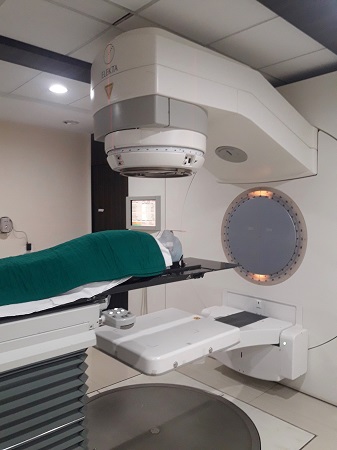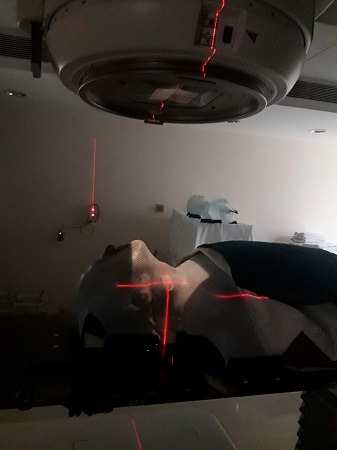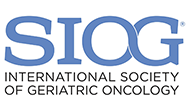June 3, 2021

The number of patients with cancer aged 65 years and older will increase in next several decades. Approximately 25% of patients with head and neck cancer (HNC) are aged 70 years and older. HNC in older patients is a major health burden. They often have multiple comorbidities with altered pharmacokinetics and pharmacodynamics which can lead to reduced treatment tolerance. Most clinical trials include a relatively young and healthier population. For example, less than 25% of patients enrolled in National Cancer Institute Cooperative Group Clinical Trials are aged 65 to 74 years and less than 10% are aged 75 years and older. Therefore, the efficacy and safety data of cancer drugs, especially in vulnerable older adults (including those with HNC), are limited.
HNC are treated by combined modalities including surgery, radiation, and chemotherapy, and therefore can be associated with high treatment-related morbidity. Oncologists need to rationalize treatment in this age group. There is a paucity of data in older patients with HNC. Therefore, practice patterns for this population vary. A retrospective study by Bahig et al analysed factors associated with survival and treatment tolerance in older patients undergoing chemoradiation for locally advanced HNC and found that Karnofsky performance status less than or equal to 80 and weight loss >5% were associated with higher mortality. Charlson Comorbidity Index (CCI) of 3 or more was also associated with higher mortality due to non-cancer causes. Patients with abnormal renal function and low body mass index were more likely to be hospitalized during treatment, and those with a higher CCI was associated with chemotherapy discontinuation.1
The choice between single vs. multi-agent (platinum-cetuximab) regimens is often made based on chronological age, which does not necessarily reflect the patient’s underlying physiologic age. Geriatric Assessment (GA) is better than chronological age when assessing patients’ physiologic age and their potential ability to tolerate cancer treatments. However, access to GA is limited in many centers. Therefore, inadequate assessment of physiologic age can lead to overtreatment in frail older adults and undertreatment in fit older adults.2
From the perspective of radiation, the modern advanced techniques of Volumetric arc radiotherapy/RapidArc techniques are excellent modalities for radiation. They are better tolerated with lower risk of acute and late toxicities. Common late effects such as xerostomia (parotid gland and submandibular gland sparing) and subcutaneous fibrosis are less common. These modalities are better at sparing pharyngeal constrictor muscles (dysphagia/aspiration-related structures sparing IMRT), thereby reducing the risk of dysphagia leading to better swallowing function after radiation. In oral cavity cancers, it is also associated with a lower risk of mucositis and dysgeusia. Hypofractionated radiotherapy is another strategy to consider in the older age group with or without dose adjustment.3
Frailty is a complex geriatric syndrome comprising of a state of increased vulnerability to stressors and it associated with higher morbidity, mortality, and treatment toxicity. Frailty screening (using GA or other criteria) allows for pretreatment optimization and helps with prognostication, ultimately leading to a better outcome.4 The use of advanced radiation techniques as well as better screening of frailty have led to a lower risk of needing prolonged feeding tubes, improved quality of life, and improved loco-regional control.
More than 90% of HNC survivors who were treated with chemoradiation experience one or more nutrition-related syndromes that negatively influence survivorship beyond the acute phase of treatment. Therefore, post-treatment surveillance and close follow-up are important to reduce the risk of malnutrition and weight loss and improve quality of life.5
Immune checkpoint inhibitor such as anti-PD-1 agents (e.g., nivolumab and pembrolizumab) have favorable toxicity profiles and are often the drug of choice for treating vulnerable older patients with HNC.6 Nonetheless, a retrospective study of 5,469 patients with head and neck squamous cell carcinoma reported reduced overall survival with increased age at diagnosis. There were no differences in disease-specific survival (DSS) based on age for patients who were younger than 80 years, but those who were 80 years and older had a significantly lower DSS. Among patients aged 80 to 85 years, disease-specific death was 1.50 times higher whereas among patients aged over 85 years, disease-specific death was 2.19 times higher.7
Figure 1: Patient with head and neck cancer undergoing radiation after immobilization on Linear Accelerator

Figure 2: Set up of the patient on the couch with lasers for Volumetric Arc Radiotherapy.

The current COVID19 pandemic has led to modified treatment for older patients with HNC.8 For example, Chinese patients with COVID-19 and 80 years or older have a mortality risk of 13%. In addition, 95% of deaths from COVID-19 occur in patients aged over 60 years and 50% of deaths occurred in patients aged over 80 years.9,10 Surgery should be reconsidered for older patients as it may result in higher risk of exposure to COVID-19. Delivering systemic treatments and radiation require multiple visits. Therefore, treatment decisions need to be individualized. It is important to consider comprehensive palliative care and social services early in the management of older patients with HNC, especially in the setting of recurrent or metastatic disease.
In conclusion, frailty assessment using GA allows for personalized treatment. It can also guide supportive care interventions (e.g., social services, palliative care) and promote shared decision-making. Older adults with NHC is a unique cohort and needs special care and attention for optimum outcome and survival.
References
- Bahig H, Fortin B, Alizadeh M, et al. Predictive factors of survival and treatment tolerance in older patients treated with chemotherapy and radiotherapy for locally advanced head and neck cancer. Oral Oncol. 2015;51(5):521-528.
- Guigay J, Le Caer H, Ortholan C, Aupérin A, Michel C, Mertens C. Treatment of inoperable elderly head and neck cancer patients. Curr Opin Oncol. 2019;31(3):152-159.
- De Felice F, Vetrone L, Bulzonetti N, et al. Hypofractionated radiotherapy combined with cetuximab in vulnerable elderly patients with locally advanced head and neck squamous cell carcinoma. Med Oncol. 2019;36(8):68.
- Crowder SL, Douglas KG, Yanina Pepino M, Sarma KP, Arthur AE. Nutrition impact symptoms and associated outcomes in post-chemoradiotherapy head and neck cancer survivors: a systematic review. J Cancer Surviv. 2018;12(4):479-494.
- Noor A, Gibb C, Boase S, Hodge JC, Krishnan S, Foreman A. Frailty in geriatric head and neck cancer: A contemporary review. Laryngoscope. 2018;128(12):E416-e424.
- Szturz P, Bossi P, Vermorken JB. Systemic treatment in elderly head and neck cancer patients: recommendations for clinical practice. Curr Opin Otolaryngol Head Neck Surg. 2019;27(2):142-150.
- Lop J, Valero C, García J, et al. Does age influence disease-specific survival in patients with squamous cell carcinomas of the head and neck? Journal of Surgical Oncology. 2020;121(7):1058-1066.
- Sharma A, Crosby DL. Special considerations for elderly patients with head and neck cancer during the COVID-19 pandemic. Head Neck. 2020;42(6):1147-1149.
- Verity R, Okell LC, Dorigatti I, et al. Estimates of the severity of coronavirus disease 2019: a model-based analysis. Lancet Infect Dis. 2020;20(6):669-677.
- World Health Organization. Statement – Older people are at highest risk from COVID-19, but all must act to prevent community spread. https://www.euro.who.int/en/health-topics/health-emergencies/coronavirus-covid-19/statements/statement-older-people-are-at-highest-risk-from-covid-19,-but-all-must-act-to-prevent-community-spread. Accessed April 13, 2021.



Leave A Comment
You must be logged in to post a comment.